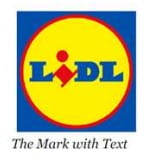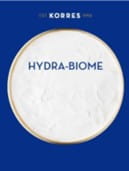- Home
- News & insights
- Insights
- In case you missed i…
- On this page
25 October 2023
– 1 of 5 Insights
In case you missed it - 2023! A round up of key brands developments this year
Part one
In preparation for our Brands Forum event on 7 November, here is part one of "In case you missed it", our round up of the key themes and cases from this year. Part two is here.
Bad faith: repeat filings and broad specs are red flags!
Bad faith is still very much in the spotlight, being a key focus of the Lidl v Tesco ruling earlier this year and forming the subject of the Sky v SkyKick appeal to the Supreme Court (for which a ruling is still awaited).
In Lidl v Tesco, Tesco successfully invalidated four of Lidl's registrations for the wordless version of its house mark (depicted below) for bad faith, although a fifth registration survived.
 |
 |
The most important aspect of the ruling concerns the burden of proof. Normally, it is for the person asserting bad faith to prove it. However, at an earlier hearing, the Court of Appeal had held that the objective circumstances raised by Tesco were sufficient to create a rebuttable presumption of lack of good faith such that the burden of proving no bad faith now passed to Lidl. Lidl was not able to explain the rationale for all but one of its filings and so the court had no option but to find bad faith.
The court inferred as follows:
- The first application for the wordless mark (filed in 1995) was applied for as a defensive weapon, solely for use against third parties and to widen Lidl's monopoly.
- Three subsequent applications (filed in 2002, 2005 and 2007) (which covered similar/overlapping goods/services to the first application and to each other) were filed to circumvent the proof of use requirements (which apply when enforcing marks that have been registered for more than five years).
-
A fifth application (filed in 2021) was not filed in bad faith since Lidl had a genuine intention to use the wordless mark by this point. There was more than a decade gap in filings. Furthermore, from a trade mark law perspective, by 2021, use of the mark with text (also depicted above) constituted use of the wordless mark (and Lidl was aware of that fact). The same was not true of the earlier filings.
The case is an important reminder of the importance of keeping clear records of the commercial logic behind trade mark applications to rebut any potential bad faith arguments. This is particularly so where there are "red flags" for bad faith such as repeat overlapping filings, excessively broad specifications and applications for unusual marks (which might not be used in the exact form applied for).
The presence of these factors will usually be sufficient to get a bad faith argument off the ground and potentially to reverse the burden of proof. Since proving lack of bad faith (especially for marks filed years ago) can be difficult, a reversal of the burden of proof will often be determinative.
More case law is required to help flesh out when the burden of proof will be reversed. However, brand owners will be buoyed by a recent decision of the Scottish Court of Session (D&M Winchester v Coleburn Distillery) which held that the UKIPO was wrong (in that particular case) to reverse the burden of proof on bad faith.
Meanwhile, brand owners also await the Supreme Court's ruling in Sky v SkyKick – expected any day now – on whether or not an intention to use a mark for one or two items within a broad class of goods/services is sufficient to fend off a bad faith claim (as the Court of Appeal ruled). If the Court of Appeal's ruling is reversed, we can expect a flood of bad faith allegations which might impact enforcement.
For more, see our Quick guide to bad faith and articles on Lidl v Tesco and Sky v SkyKick.
Indirect confusion: everyone's claiming it!
A glut of successful claims of indirect confusion last year seems to have given brand owners the impetus to throw this argument into every case (see our article on the Liverpool Gin Distillery and GIRL BOSS cases)!
Indirect confusion occurs where the average consumer does not mistake the marks for one another but considers that they come from the same or economically linked undertakings. This can arise where the average consumer would consider the later mark to be a brand extension, sub-brand, variant/rebrand or part of a co-branding arrangement. Indirect confusion is not a new concept but is increasingly argued, with mixed results.
The claim was successful in the Asics swirl case (article here), the fame/distinctiveness of the shared swirl element (depicted below) and the fact that co-branding arrangements are common in the sports field being key issues. It also succeeded in Match Group v Muzmatch, the High Court (and Court of Appeal) concluding that Muzmatch would be considered a sub-brand of match.com, specifically targeting Muslim users.
Conversely, the claim failed in the Jack Daniel/JACK AND VICTOR case because JACK AND VICTOR is not a logical extension of the Jack Daniel's mark: it would not be usual to drop the distinctive "Daniels" element and replace it with another distinctive name (VICTOR) (article here).
 |
 |
|---|---|
| The mark applied for | The earlier registration |
While each case will turn on its own facts, the distinctiveness of the shared elements of the marks, the nature of the market (and any propensity for brand extensions etc) and any differences between the marks will all be key factors in determining whether there is a likelihood of indirect confusion.
Brand owners should consider the risk of a finding of indirect confusion when clearing new brands and whether (in appropriate cases) a claim of indirect confusion could strengthen any infringement claims.
We still don’t know whether prior rights must be in existence on the decision date!
At EU level, we are still waiting for ECJ rulings on the glut of cases (article here) which will determine whether the earlier trade mark or right has to be valid and subsisting at the date the decision is taken. The cases all arose in the context of Brexit, but the implications extend much further.
Obviously, a prior right has to be valid and subsisting at the priority/filing date of the later mark under attack. However, EUIPO practice (albeit sporadic) has also been to hold that the same must be true at the date the decision is issued (see eg Kaane v EUIPO - GOLD MONT). That's why the EUIPO declared that all UK prior rights would cease to be relevant (and dismissed all pending claims based on such rights) at the end of the Brexit transition period.
A small number of UK prior right holders appealed against the dismissal of their actions and what has followed has been conflicting decisions from different chambers of the General Court (both as regards whether the prior right must be in existence when the decision is taken and – if so – which decision).
Now three cases (Indo European Foods, Nowhere Co. and Shopify) are all pending before the ECJ. If the ECJ agrees with EUIPO practice, then not only will most of the Brexit-related cases fall away but any action based on a prior right that is revoked, invalidated or otherwise ceases to be registered during the course of proceedings will fail (depending on when it ceases to be registered). Given that most EUIPO actions last several years and more with appeals, this will impact the enforcement of prior rights that haven’t been used.
The position is clearer in the UK: a prior right need only be in existence at the priority/filing date of the mark under attack. What happens to the prior right subsequently is irrelevant (see eg RIVIERA).
A change in practice for descriptive/weakly distinctive marks at the EU?
There is tentative evidence that the General Court is re-establishing a principle that has arguably been diluted in recent years: that marks that are descriptive/weakly distinctive should be given a narrower scope of protection.
A good example is the recent decision in Korres AE v EUIPO, where the General Court found that there was no likelihood of confusion between an earlier word only national French registration for HYDRABIO and a later EUTM application for HYDRA-BIOME (and device) (depicted below), both for cosmetics. The Court reiterated that, where the shared element between two marks is weakly distinctive, "the global assessment of the likelihood of confusion does not often lead to a finding that such likelihood exists”. Other examples include the yoga ALLIANCE (article here) and BIOPLAK/BIOLARK cases.
 |
HYDRABIO |
|---|---|
| The mark applied for | The earlier registration |
Despite this positive development, brand owners should remember that there can still be a finding of a likelihood of confusion where the allegedly descriptive element would not be understood throughout the EU such as in the non-English speaking parts (see eg the TRUE & device/TRUE SKIN and GRANULAT cases). Similarly, there can be a finding of a likelihood of confusion where there is little else (other than the weakly distinctive elements) to distinguish the marks (see eg ME/He&Me and FINANCIFY/FINANCERY).
The position is arguably more straightforward in the UK, where the average consumer is deemed readily to understand descriptive and allusive words. Nonetheless, there can still be findings of a likelihood of confusion where there is little to distinguish the marks (see eg WeFix).
 |
 |
|---|---|
| The mark attacked | The earlier registration |
More usually, however, weakly distinctive marks are given a relatively narrow scope of protection, as exemplified by the recent Instagram v Meta 404 (article here) and Lifestyle Equities v Royal County of Berkshire Polo Club (article here) cases. The latter case involves the situation where the earlier mark was deemed weakly distinctive due to the sheer number of brands using images of polo players on horseback and the words "polo club" in relation to clothing (what the court termed, a "crowded market"), but the underlying issue is the same.
Evidence and arguments: get them right first time (at least at the UKIPO)
A number of cases have taught us the importance of getting evidence and arguments right first time at the UKIPO this year. The scope to introduce additional or new evidence on appeal in the UK is very limited. The admission of such evidence is very much the exception and not the rule (see Consolidated Developments v Cooper).
This can be contrasted with the position at the EUIPO where there is considerable scope to supplement evidence on appeal to the Board of Appeal. This was exemplified by the recent BIG MAC revocation action, where McDonalds was permitted to submit a further 700 pages of evidence of use on appeal, sufficient to overcome the original revocation decision (article here).
Similarly, it is very difficult to overturn a decision of the hearing officer on appeal from the UKIPO. The original decision must contain a distinct and material error of principle or be wrong. The threshold is high with the Appointed Person and courts reluctant to interfere with hearing officer's decisions as exemplified by the Instagram v Meta 404 (article here) and The Skinny Food Co cases. Again, this can be contrasted with the position at the EUIPO where the Board of Appeal is tasked not simply with reviewing the lawfulness of the first instance decision but with completely reviewing the case in terms of both fact and law.
All this means that extra care should be taken to get things right first time – at least at the UKIPO.
Genuine use means trade mark use
Trade mark owners must make genuine use of their marks if they are to enforce them and avoid revocation actions (after the initial 5-year use "grace" period).
This year, we have had yet more reminders that genuine use means use as a trade mark, not use that is descriptive or decorative. The line is sometimes fine: while Lindt's TEDDY word registration for confectionary was revoked in the UK since use (depicted below) was deemed to be descriptive, TOUS retained its registration for a teddy bear logo for jewellery as there was use (depicted below) on tags and labels consistent with trade mark use (articles here and here).
The cases are welcome reminders that use must be of the correct type.
 |
 |
 |
 |
|---|---|---|---|
| Uses of Lindt's TEDDY word mark | Uses of TOUS's teddy bear logo mark | ||
You may also be interested in our article on the IP issues engendered by deepfakes here.
We also round up other developments this month here.
In this series
In case you missed it - 2023! A round up of key brands developments this year
Part one
25 October 2023
Shape marks: it's no picnic protecting the shape of a teddy bear
25 October 2023
Shape marks again: teddy bear mark put to genuine use
25 October 2023
by Alison Cole
Related Insights

easyGroup v Premier Inn: Court rejects family of marks monopoly and clarifies section 10(3) protection
by Louise Popple and Moira Sy

Getty Images v Stability AI: the copyright ruling
Louise Popple, Adam Rendle and Xuyang Zhu analyse the copyright elements of the decision in Getty Images v Stability AI.
by multiple authors

A quick guide to… translations of trade marks
by Christian Durr and Louise Popple

